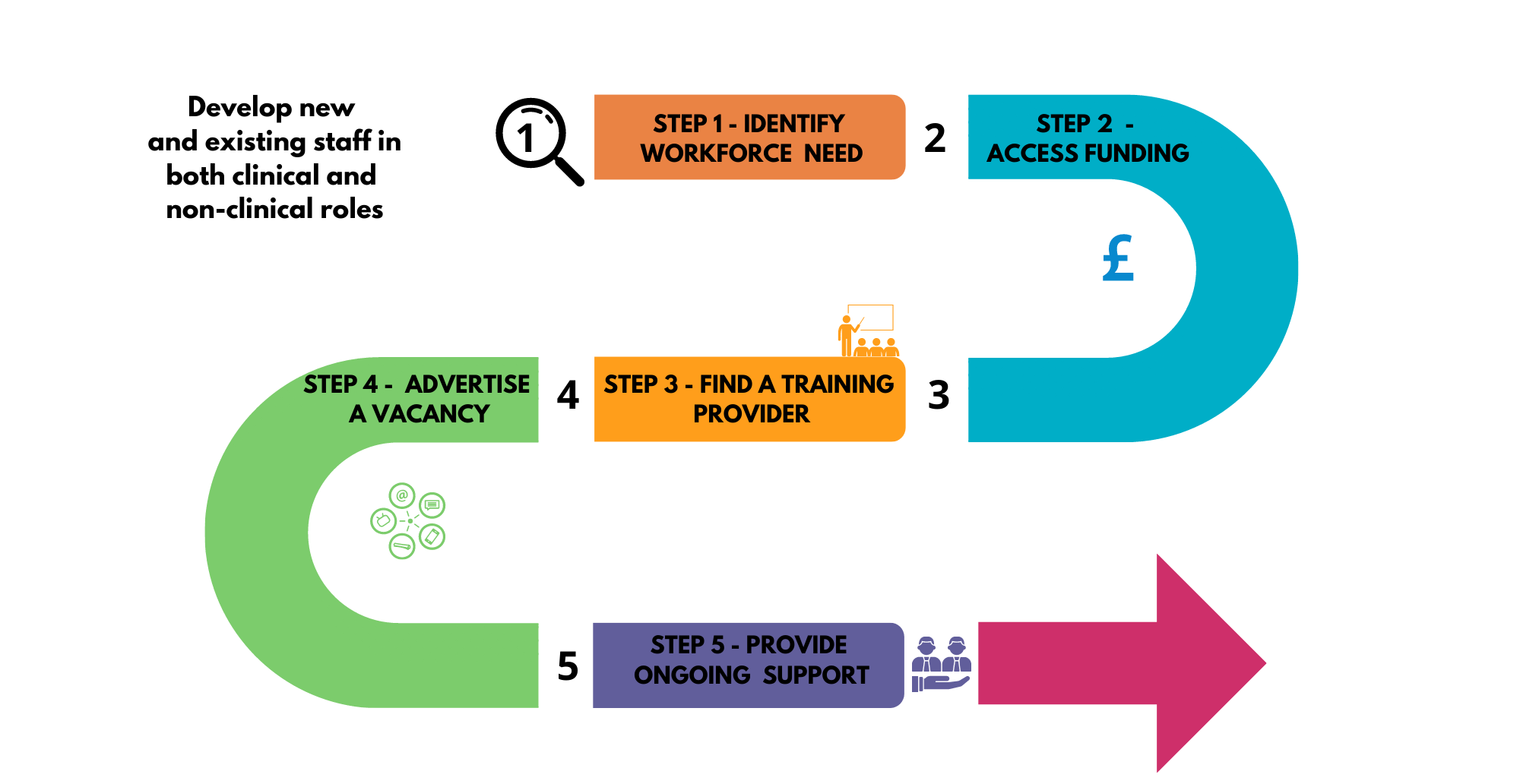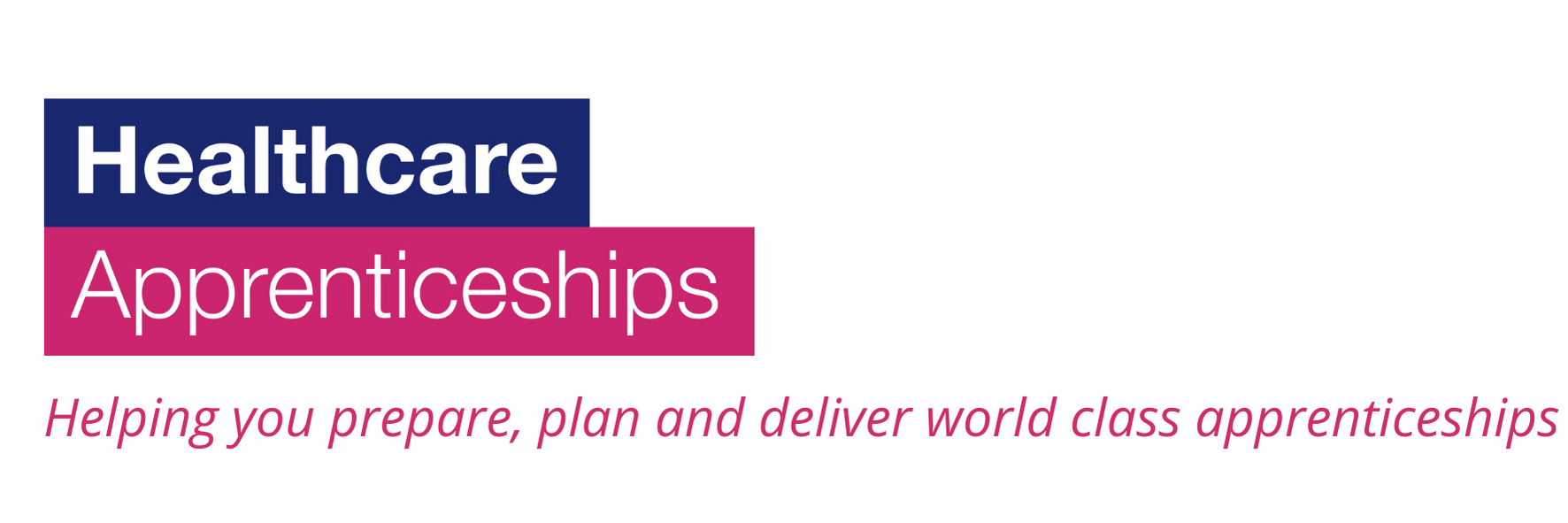 Follow these steps to get started:
Follow these steps to get started:
Step 1 – What is your workforce development need? Identify the skills gaps of your workforce and vacancies. Estimate how much salary funding you have to spend on apprenticeship roles. Our costing / planning tools may help.
Step 2 – Access funding either via the Levy (if you have a wage bill over £3million), reserve government co-investment or find a levy transfer.
Step 3 – Select an apprenticeship standard and choose apprenticeship training and assessments. Find a training provider who will offer the right apprenticeship and assess your apprentice during their training.
Step 4 – Advertise a vacancy: you can work with your training provider to help with advertising and shortlisting. You may identify an existing employee or recruit a new apprentice.
Step 5 – Provide ongoing support for the apprentice. Help them to adjust to the workplace by planning workload and providing the necessary opportunities to complete practical tasks in line with training goals.





